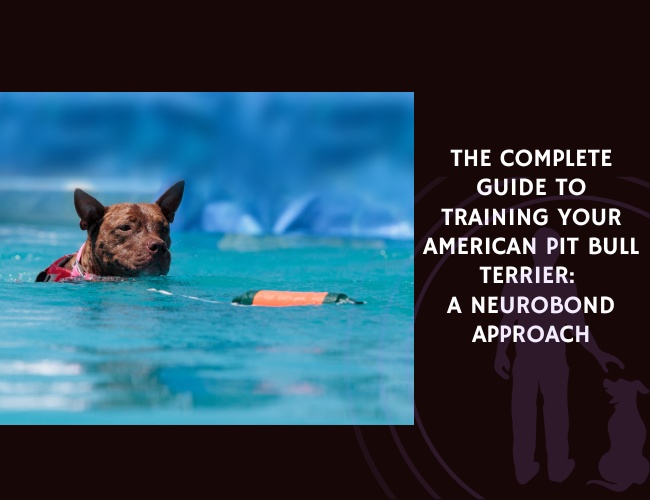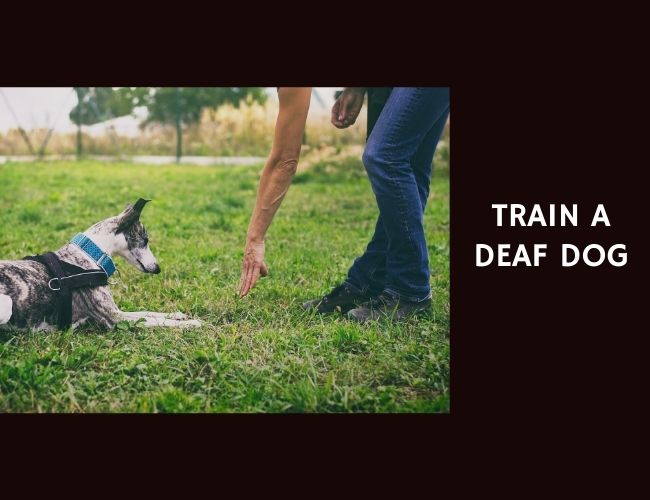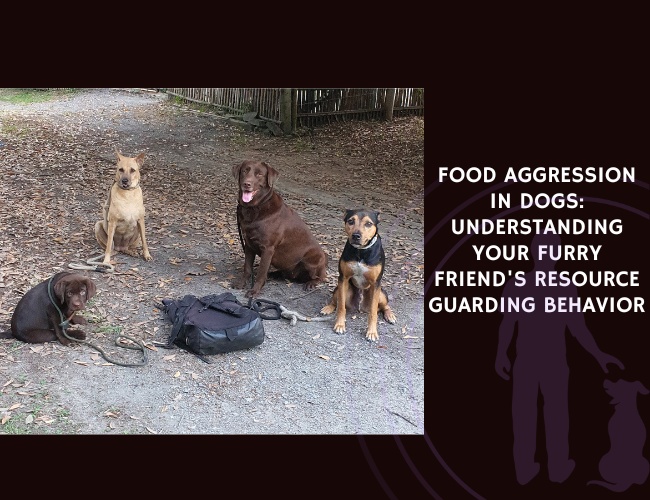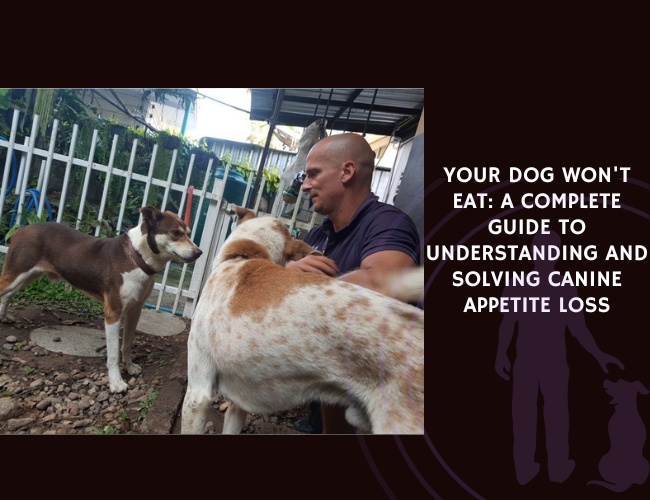Introduction: Understanding Your Pit Bull’s Learning Mind
Your Pit Bull Terrier carries within them a fascinating paradox—a breed historically shaped by determination and tenacity, yet possessing one of the most emotionally attuned hearts in the canine world. This duality isn’t a challenge to overcome; it’s the foundation upon which we build extraordinary partnerships. The NeuroBond approach recognizes that your Pit Bull’s strong-minded nature and deep capacity for connection aren’t opposing forces—they’re complementary aspects of a remarkably intelligent breed that learns through relationship, not domination.
Pit Bulls exceptional learners! Their true genius lies in their adaptive intelligence, their ability to read emotional nuance, and their profound desire to synchronize with their human’s world.
The journey we’re about to explore together isn’t about controlling your Pit Bull—it’s about creating a communication system so intuitive that traditional commands become almost unnecessary. Let us guide you through a training philosophy that honors your dog’s instincts while building the invisible leash of trust. 🐾
Character & Behavior: The Pit Bull Learning Profile
The Velcro Dog Phenomenon
Did you know that Pit Bulls are often called “Velcro dogs”? This isn’t just endearing terminology—it reflects a neurological reality. Your Pit Bull’s brain is wired for intense social bonding, with heightened activity in regions associated with attachment and emotional processing. This neurobiological predisposition means your dog doesn’t just want to please you; they’re biologically driven to maintain proximity and emotional synchronization with their chosen person.
This trait becomes your greatest training asset. Unlike breeds that maintain emotional independence, your Pit Bull’s default state is connection-seeking. When you understand this, training transforms from a series of commands into a continuous conversation. Their people-pleasing nature isn’t weakness—it’s an evolutionary adaptation that makes them remarkably responsive to subtle social cues, body language shifts, and even changes in your breathing pattern.
Energy as Intelligence in Motion
Your Pit Bull’s high energy isn’t just physical—it’s cognitive overflow. Their minds process information rapidly, constantly scanning for problems to solve and tasks to complete. This mental velocity can manifest as frustration when understimulated, but within the NeuroBond framework, we channel this energy as the engine of learning. A tired Pit Bull isn’t just a good dog; they’re a dog whose cognitive resources have been fully utilized.
Consider how your Pit Bull approaches a new puzzle toy. You’ll notice they don’t give up easily—that famous “gameness” or tenacity isn’t stubbornness; it’s sustained cognitive engagement. This same determination that once made them formidable working dogs now makes them exceptional students when training acknowledges their need for mental challenge alongside physical exercise.
The Independence Paradox
Here’s where Pit Bulls reveal their complexity: they’re simultaneously people-focused and independently minded. This isn’t contradiction—it’s sophisticated cognitive flexibility. Your Pit Bull can shift between “What would you like me to do?” and “I’ve assessed the situation and here’s my solution.” This cognitive style means they excel when training provides structure with choice, boundaries with agency.
Training Philosophy: The NeuroBond Method Applied
Letting Your Pit Bull Be
The first principle of NeuroBond training—letting the dog be themselves—is particularly powerful with Pit Bulls. We’re not suppressing their determination or intensity; we’re giving it purposeful direction. When your Pit Bull pulls on the leash with that characteristic strength, traditional training might correct this “problem.” The NeuroBond approach sees it differently: your dog is solving a problem (getting somewhere faster) using their available tools (physical power).
Instead of punishment, we offer a better solution. Standing still when they pull teaches them that forward movement only happens through connection, not force. Your Pit Bull’s intelligence quickly recognizes the pattern: tension stops progress, relaxation enables it. You’re not breaking their will—you’re redirecting their problem-solving capacity.
Building the Invisible Leash
The NeuroBond starts with eye contact—not demanded, but invited. With Pit Bulls, this connection forms rapidly due to their Velcro nature. Begin by simply waiting. When your dog naturally checks in with you (and they will, because monitoring you is hardwired into their behavior), mark that moment with warm acknowledgment. This isn’t about treats initially—it’s about emotional resonance.
Your Pit Bull learns that looking at you brings something better than food: synchronization. This becomes their default behavior in uncertainty. A strange dog approaches? They look at you. A loud noise startles them? They look at you. This isn’t learned helplessness—it’s learned partnership. The invisible leash isn’t restraint; it’s chosen proximity.
From Connection to Cooperation
Once the NeuroBond is established—typically within 2-3 weeks of consistent practice—task learning accelerates dramatically. Your Pit Bull no longer learns “commands”; they learn collaborative patterns. Recall becomes “let’s reunite.” Heel becomes “let’s move together.” Retrieve becomes “let’s share this game.” The shift from obedience to cooperation transforms everything.
Early Development & Socialization
The Critical Window: 3-16 Weeks
Your Pit Bull puppy’s brain is extraordinarily plastic during this period, with neural pathways forming at an astronomical rate. But here’s what makes Pit Bulls unique: their social learning is particularly intense. While all puppies need socialization, Pit Bulls process social information with unusual depth. They’re not just meeting other dogs; they’re cataloging interaction patterns, storing emotional associations, and building complex social maps.
This is why superficial socialization fails Pit Bulls. Simply exposing them to other dogs isn’t enough—they need guided social experiences that build positive neural pathways. In the NeuroBond framework, we structure these interactions carefully. Your puppy learns that you’re the constant in every social equation. Other dogs come and go, but the connection with you remains primary.
Managing Dog Selectivity Through Trust
Some Pit Bulls inherit genetic tendencies toward dog selectivity—this isn’t aggression, it’s heightened social discrimination. The NeuroBond approach doesn’t try to make every Pit Bull love every dog. Instead, we build trust that you’ll manage social situations appropriately. Your dog learns they don’t need to make social decisions independently because you’re the social navigator.
When another dog approaches, your Pit Bull’s first response becomes checking with you, not independent assessment. This isn’t suppressing their instincts—it’s providing a more reliable decision-making framework. They trust your judgment over their initial impulses, not through dominance but through proven reliability.
Advanced Training Techniques
Impulse Control as a Cognitive Skill
Pit Bulls often struggle with impulse control, not due to deficiency but due to their rapid-fire neural processing. Their brains generate solutions faster than they can evaluate them. The NeuroBond method builds impulse control through cognitive loading, not suppression. We give your Pit Bull’s brain more interesting problems to solve than the impulsive behavior.
For example, when your Pit Bull wants to chase a squirrel, traditional training says “No!” The NeuroBond approach says, “Here’s something more interesting.” We might ask for a series of position changes—sit, down, stand, spin—engaging their cognitive resources so fully that the squirrel becomes background noise. Your dog learns that staying connected with you provides more stimulation than independent pursuit.
The Power of Structured Freedom
Pit Bulls thrive with clear boundaries that still allow choice. In practice, this means creating training scenarios where they can succeed through multiple pathways. Teaching recall? Instead of one rigid response, allow variations: they can come straight, circle around, or approach sideways—as long as they come. This honours their independent problem-solving while maintaining the essential outcome.
Your Pit Bull learns that creativity within structure is rewarded. This prevents the frustration that comes from overly rigid training while still maintaining necessary boundaries. They’re not robots executing programs; they’re thinking partners finding solutions.
Channeling Gameness Productively
That famous Pit Bull tenacity—their “gameness”—is a training superpower when properly channeled. Unlike breeds that quit when tasks become difficult, your Pit Bull’s neurology is wired for sustained effort. The NeuroBond method uses incremental challenge increases, always keeping tasks just within reach but requiring effort.
This might mean gradually increasing the duration of focus, the complexity of tasks, or the level of distraction. Your Pit Bull’s brain thrives on this progressive challenge. They don’t just learn individual behaviors; they develop meta-learning skills—learning how to learn more efficiently.
Driven. Devoted. Discerning.
Your Pit Bull learns through emotion, not intimidation.
Behind their strength lies a mind that responds to subtlety, trust, and emotional tone. Their loyalty isn’t earned through commands — it’s built through resonance.
They don’t just obey — they evaluate.
Each response is a decision, shaped by instinct and shaped further by connection. Training becomes less about correction and more about co-creation when you respect their cognitive complexity.
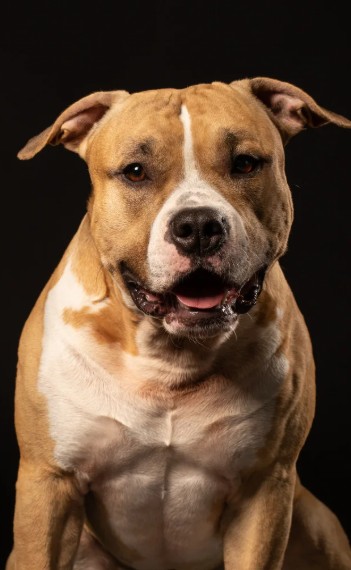
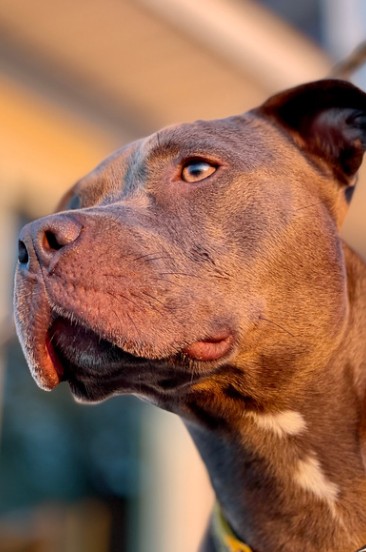
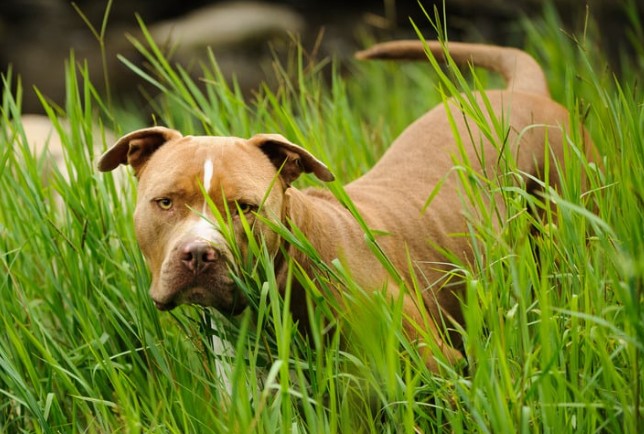
True power comes from partnership.
When your Pit Bull trusts your leadership, their tenacity becomes your greatest ally. They’ll work with you — not because they have to, but because you’ve given them a reason to choose you.
Common Challenges & Solutions
Addressing Reactivity Through Connection
When Pit Bulls develop reactivity, it’s rarely true aggression—it’s usually frustrated social desire or protective instinct seeking outlet. The NeuroBond approach doesn’t suppress these feelings; it provides alternative expression channels. Your reactive Pit Bull learns that maintaining connection with you during triggers brings better outcomes than independent reaction.
We build this through graduated exposure paired with connection reinforcement. Your dog learns that the appearance of triggers predicts increased engagement with you, not confrontation with the trigger. This isn’t avoidance—it’s sophisticated emotional regulation through relationship.
The Pulling Problem: Reframed
Your Pit Bull’s strength makes leash pulling particularly challenging, but the NeuroBond solution is elegant. Instead of opposing their strength with corrections, we make pulling physically impossible through positioning and psychologically unrewarding through consistency. Your dog learns that the leash is a communication line, not a restraint.
Standing on the leash when they pull creates a natural consequence without confrontation. They problem-solve their way to comfort—which happens to be the position you want. No force, no anger, just natural learning through experience. Your Pit Bull’s intelligence quickly recognizes the pattern, and pulling extinguishes not through punishment but through ineffectiveness.
Managing Frustration Tolerance
Pit Bulls’ low frustration tolerance isn’t a character flaw—it’s a neurological reality related to their high drive and rapid cognitive processing. The NeuroBond method builds frustration tolerance gradually through supported challenges. We start with microseconds of delayed gratification, building to minutes, then longer durations.
Your dog learns that frustration is temporary and manageable, always followed by resolution. This isn’t learned helplessness—it’s emotional regulation. They develop cognitive strategies for managing their own arousal levels, checking in with you when frustration builds rather than exploding into reaction.
Exercise & Mental Stimulation
The Physical-Cognitive Balance
Your Pit Bull needs approximately 1-2 hours of exercise daily, but here’s the crucial insight: physical exhaustion without cognitive engagement creates a fit but frustrated dog. The NeuroBond approach integrates mental challenges into physical exercise. A walk becomes a training session. Fetch becomes a cognitive game. Every physical activity carries learning opportunity.
This might mean changing pace unpredictably during walks, requiring position changes at random intervals, or hiding toys during fetch for your dog to find. Your Pit Bull’s brain stays engaged while their body works, achieving true satisfaction rather than mere exhaustion.
Work as Play, Play as Work
Pit Bulls excel when they have jobs, but in the NeuroBond framework, the distinction between work and play dissolves. Training games become their job. Puzzle toys become work sessions. Even relaxation becomes an active choice rather than enforced stillness. Your dog learns that engagement with you provides the most rewarding “employment.”
Consider creating daily “work” sessions that feel like play: finding hidden objects, learning new tricks, or solving food puzzles. Your Pit Bull’s brain interprets these as meaningful tasks, satisfying their need for purpose while strengthening your bond.
Health & Nutrition Impact on Training
The Nutrition-Behavior Connection
Your Pit Bull’s diet directly impacts their trainability. High-quality proteins support neurotransmitter production, affecting mood and cognitive function. Omega-3 fatty acids enhance neural plasticity, improving learning capacity. The NeuroBond approach considers nutrition as foundational to training success, not separate from it.
Unstable blood sugar creates unstable behavior. Feeding schedules that maintain consistent energy levels throughout the day support emotional regulation and sustained attention during training. Your Pit Bull’s brain needs steady fuel for optimal learning, just as their muscles need protein for strength.
Physical Comfort and Learning Readiness
Pit Bulls are stoic about discomfort, often hiding pain that affects their training responsiveness. Hip dysplasia, common in the breed, can make certain positions uncomfortable, affecting compliance that seems like stubbornness. The NeuroBond method always considers physical comfort as prerequisite to learning.
Regular health checks ensure your dog’s resistance isn’t physical discomfort masquerading as behavioral issues. A Pit Bull who suddenly becomes reluctant to perform previously learned behaviors might be communicating physical, not training, needs.
Senior Years Training
Cognitive Maintenance Through Engagement
As your Pit Bull enters senior years (7-9+), training shifts from acquisition to maintenance. The NeuroBond remains strong, but activities adapt to physical limitations while maintaining cognitive challenge. Mental stimulation becomes even more critical for preventing cognitive decline.
Senior Pit Bulls often show renewed interest in training when it’s adjusted for their pace. Shorter sessions with more frequent breaks, lower-impact activities with higher cognitive load, and plenty of success experiences keep their minds sharp. The invisible leash of trust, built over years, becomes even more evident as physical leashes become less necessary.
Adapting Without Diminishing
Your senior Pit Bull’s training continues evolving, not ending. Perhaps high jumps become ground-level searches. Running recalls become walking check-ins. The activities change, but the underlying connection-based learning continues. Your dog maintains purpose and engagement throughout their lifetime.
Lifestyle Integration
The 24/7 Training Mindset
In the NeuroBond framework, training isn’t a scheduled activity—it’s a continuous relationship. Every interaction reinforces patterns. Your Pit Bull learns that connection with you is always available, always rewarding. This doesn’t mean constant commands; it means consistent communication through body language, energy, and attention.
Your daily routine becomes the training program. Morning greetings establish calm connection. Meal times reinforce patience. Walks practice cooperation. Evening settling teaches relaxation. Your Pit Bull learns life skills through living, not through artificial training sessions.
Family Dynamics and Consistency
Pit Bulls thrive with consistency across all family members. The NeuroBond can extend to multiple people, but primary attachment usually focuses on one or two individuals. Each family member develops their own subtle communication style with your dog, but core principles remain consistent.
Children learn to interact with your Pit Bull through supervised connection rather than rough play. Other pets coexist through managed introduction and maintained boundaries. Your Pit Bull learns their place in the family system—valued, included, but with defined roles and expectations.
Conclusion: Is the NeuroBond Method Right for You and Your Pit Bull?
The NeuroBond approach asks more of you than traditional training—not more time or effort, but more emotional presence and consistency. Your Pit Bull will mirror your investment, returning connection for connection, trust for trust. This method works because it aligns with your dog’s natural neurology rather than opposing it.
Ask yourself: Are you ready to see training as relationship rather than task list? Can you remain patient while your Pit Bull problem-solves their way to solutions? Will you trust the process when connection feels slower than correction? If you answer yes, you’re ready to experience the profound partnership possible with these remarkable dogs.
Your Pit Bull brings intelligence, loyalty, and endless capacity for connection. The NeuroBond method simply provides the framework for these qualities to flourish. The invisible leash you build together becomes stronger than any physical restraint, creating a partnership that transcends traditional training.
Remember: your Pit Bull isn’t just learning commands—they’re learning to navigate the world with you as their trusted guide. That journey, built on mutual respect and clear communication, transforms both of you. Welcome to training that honors the full potential of your remarkable companion. 🧡
Next Steps in Your Journey
Begin with five minutes of connection practice daily—no commands, just shared attention. Notice how your Pit Bull naturally checks in with you. Build from there, adding structure gradually while maintaining the emotional foundation. Trust the process, trust your dog, and most importantly, trust the bond you’re building together.
The path ahead isn’t always easy, but it’s always rewarding. Your Pit Bull is ready to show you what’s possible when training becomes partnership. The question isn’t whether they can learn—it’s whether you’re ready to teach through connection rather than control. The answer, reflected in your Pit Bull’s eager eyes, is already there. You just need to see it.

